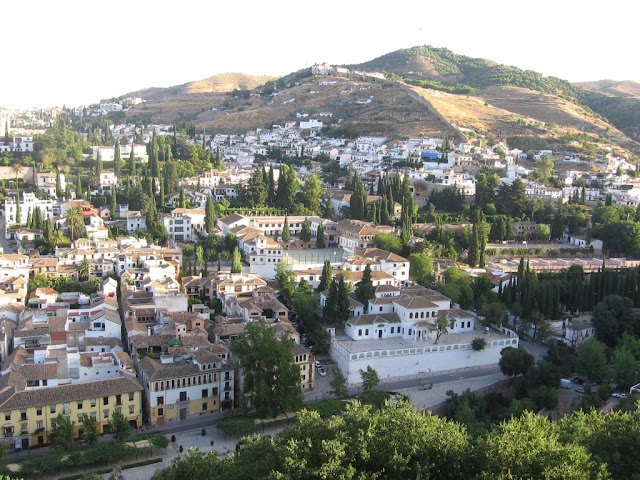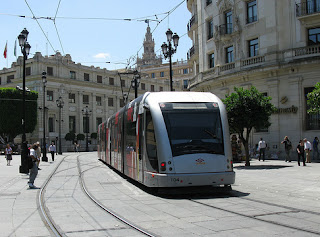We left Ronda on Friday afternoon, Sept. 17 and drove east to Granada , where we stayed in the modern city a mile or so from the Alhambra
So we spent Saturday seeing the old city, below, looking north east from the Alhambra Santa Ana
Market stalls in the plaza. Beautiful produce, but I wonder who shops here, in the middle of tourist Granada
Arencas are salted herring. I should have bought one to eat on the spot.
Fountain of the Giants in the Plaza.
Nearby is the cathedral.
and the Arab market.
Then we walked up a narrow street adjacent to the Rio Darro, which divides the hill of La Alhambra from the Albaicín barrio.
When the canyon widened, there was a pleasant plaza; a good spot for a beer.
And a view of the Alhambra
From there (the plaza in the lower left) we walked up hill, through the Albaicín to the…
…Mirador de San Nicolás, with its view across the canyon of the Darro to the Alhambra
And then to a very pleasant comida, at the Mesón Casa Blás, where I had a very interesting dish of eggplant with honey followed by that Spanish favorite, spareribs and fries.
Then back down the hill toward the hotel for a nap.
The next miring, bright and early, we were at the Alhambra
The Patio de los Arrayanes.
Gardens in the Palacio Árabe.
La Torre de las Damas, the Ladies’ Tower.
View from La Torre de las Damas.
Leaving the Moorish palaces and gardens, we walk toward the Palacio de Generalife (Arabic, Jennat al Arif), the Architect’s garden palace.
Gardens in the Generalife…. with tourists.
Back to the center of the site, we pass the Iglesia de Santa María, built by Carlos V after the Catholic reconquest of Andalucía.
Then on to the Alcazaba, the most fortified part of the Alhambra
And out through the old entrance.
A marvelous site, well maintained and relatively uncrowded.
Next, Alicante to Barcelona

































































